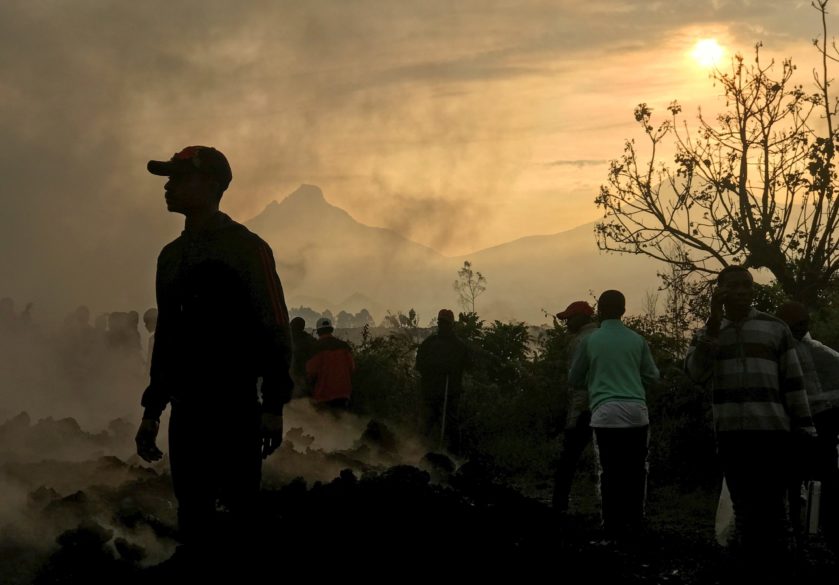NATION
FLAT ROCK, Mich. (CNS) – In the year 1300, a priest was celebrating Mass in the convent of O Cebreiro, Spain. Lacking faith in the true presence of Jesus in the sacrament, the priest nevertheless recited the consecration prayers. Suddenly, the host he held in his hand turned into human flesh. Turning to the cup, the priest, incredulous, noticed not wine, but actual human blood. He fell in adoration. The incident, recognized by Pope Innocent VIII as the “Miracle of O Cebreiro,” is one of hundreds of eucharistic miracles in the Catholic Church’s history – incidents in which the supernatural reality of Jesus’ body and blood in the Eucharist became powerfully and physically apparent. The church teaches that the Eucharist is the “source and summit” of the Catholic faith, although a 2019 Pew study found that only one-third of Catholics believe in the Real Presence in the Eucharist. The Real Presence Apostolate of Michigan has been educating Catholics on the Real Presence since 2007 by offering a traveling exhibit about eucharistic miracles – instances in which the literal presence of Jesus’ body and blood in the Eucharist have become physically manifest. The exhibit has 170 panels and all were on display in the vestibule of St. Roch Parish in Flat Rock at the start of Holy Week. Several parishes in the Archdiocese of Detroit hosted the exhibit recently, and its next stop was Grand Rapids, Michigan, April 22-29.
NEW YORK (CNS) – Ukrainian Catholics in New York celebrated Easter with prayers that Christ’s triumph over death will also signify victory over everything evil happening in their home country. Bishop Paul P. Chomnycky of the Ukrainian Catholic Eparchy of Stamford, Connecticut, was the main celebrant for the Easter Divine Liturgies April 24 at St. George Ukrainian Catholic Church in the East Village neighborhood of Manhattan. The parish celebrates services according to the Julian calendar. On the 60th day of the Russian invasion of Ukraine, Bishop Chomnycky said the situation there is coloring the whole Easter feast, as a cloud hanging over everything, but there is reason for hope. “In the resurrection, not only did Christ defeat death, but he also defeated violence, evil and mistruth,” he said. He said all Ukrainians are “putting our trust in the resurrected Christ that he will defeat evil in our country.” He also read passages from the Easter message of Archbishop Sviatoslav Shevchuk, major archbishop of the Ukrainian Catholic Church. Writing from Kyiv, Archbishop Shevchuk compared the passion of Christ to the war in Ukraine. “We have become aware of how human nature remains fallen, how the devil continues to control human beings who have no God in their hearts. He who sows hatred and instigates war against one’s neighbor opposes the almighty.”
VATICAN
VATICAN CITY (CNS) – In war, especially the current conflict in Ukraine, no one can claim victory, because all of humanity loses, Pope Francis said. During an April 23 meeting with a group of Italian pilgrims commemorating a miraculous image of Mary that wept, the pope said her tears are a sign of God’s compassion as well as his sorrow for humankind’s sins. Mary’s tears are “a sign of God’s weeping for the victims of the war that is destroying not only Ukraine – let’s be brave and tell the truth – it is destroying all the countries involved in the war. All of them.” War, he explained, “not only destroys the people who have been defeated. No, it also destroys the victor. It also destroys those who look at it as superficial news to see who is the winner, who is the loser. War destroys everyone.” More than 3,000 pilgrims took part in the pilgrimage, which coincided with the 500th anniversary of a miracle in which an image depicting Mary at Jesus’ side during the crucifixion shed tears of blood. The tears that Mary shed, as well as the miracles attributed to the image over the centuries, are not only a sign of God’s love for his children but also “Christ’s pain for our sins, for the evil that afflicts humanity.”
WORLD
KINSHASA, Congo (CNS) – A Catholic priest in Congo said Pope Francis will be visiting the country not only to reconcile it, but also to tell the world “about the conflicts that are tearing this country apart.” The announcement of the pope’s July 2-5 visit “sounded like the voice of the angel of the Lord to the poor shepherds in the region of Bethlehem: ‘I bring you good news of great joy, which will be for all the people,’” said Father Georges Kalenga, a member of the planning committee who is also second deputy secretary-general of the Congolese bishops’ conference. Father Kalenga told Catholic News Service that the pope will be visiting to reconcile a people blighted by the evils of “tribalism, regionalism and clientelism, the exclusion of political opponents, practices and discourses that weaken social ties, compromise national cohesion on several levels, particularly on the socio-political level.” Pope Francis will visit Kinshasa, the country’s capital, but he also will travel to Goma, in the east. Father Kalenga said Goma is “the place chosen symbolically for the pope’s meeting with the people who live in the eastern part of the country, bloodied for more than two decades by wars, rapes, massacres and all the other violations of human dignity.”

